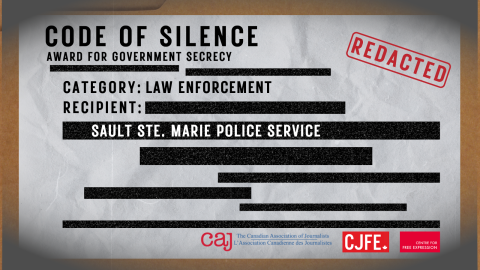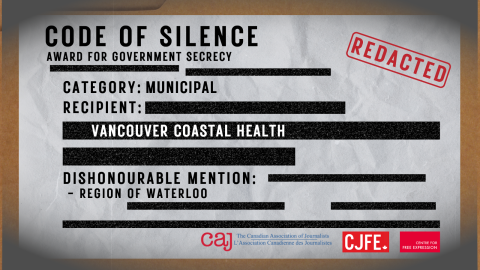Avoiding Accountability by Misusing Public Agencies: Metrolinx as Example
Many community groups are debating and challenging transit plans by Metrolinx, the powerful Ontario agency created to supplant municipalities in Southern Ontario. ‘Don’t Mess with the Don’ is fighting against a proposed train lay-over facility in the Don Valley; folks at Thorncliffe Park are challenging the proposed expropriation of the mall where Iqbal Halal Foods is the anchor tenant and objecting to plans for tunnelling under their homes; the Save Jimmie Simpson group says the proposed Ontario Line, Doug Ford’s pet project, should be buried in a densely populated stretch; and people in Thornhill say that the extension of the Yonge subway should be returned to its route along Yonge instead of re-routed through an area advantageous to developers. And protest has greeted the surprise Metrolinx transit station plan on the historic site of Ontario’s First Parliament.
Metrolinx, created by the Liberal Ontario government in 2006, is one of a small handful of very powerful public agencies that spend billions on what we used to think of as public works. These agencies or public corporations are designed to minimize both accountability and transparency. Infrastructure Ontario is the other giant, exercising influence far beyond Ontario. Waterfront Toronto was set up using the same structure but is not a Crown corporation because it’s ‘tri-government’ and has a limited lifespan.
Even members of the provincial legislature find it impossible to get reliable information from Metrolinx (according to my own MPP, Peter Tabuns). Community groups are in an even worse position. Partial information can be gleaned if one has hours to spare, from media coverage of specific projects (especially the Eglinton Crosstown), reports by the Ontario Auditor General, (who has raked Metrolinx over the coals several times to no effect), and court documents arising from the agency’s prodigious litigation.
The context for the creation of public agencies whose decision-making is largely in the shadows is this: following ‘new public management’ (NPM) ideas, the Ontario Liberals decided to hand over decision-making and procurement previously done by public officials to agencies told to behave as if they were for-profit corporations. These are run by their own appointed boards; board meetings are rarely open to the public, and whether anyone in government is holding them accountable on behalf of the public interest remains a mystery. Agency board members come from both the public and the private sector (except for Infrastructure Ontario, which has no municipal or even provincial politicians on its board), but senior managers are drawn from the private sector. They expect private-sector salaries (the CEO of Metrolinx has a reported salary of over $742,000 and gets undisclosed ‘performance’ bonuses on top), and when they deploy private sector methods including secrecy they are fulfilling the function assigned to them by governments. At a recent online meeting with a community group a senior manager at Metrolinx said that ‘we’ (meaning the agency) can “do anything we want” with the land within a rail corridor because “we own it.” Of course, regular private landowners have to follow zoning and other planning rules; but the use of the royal ‘we’ for publicly owned land was particularly telling. Perhaps the ‘we’ referred to the provincial government, though, since the “Building Transit Faster Act” gave Metrolinx power even over individual houses located 30m either from a transit line or from a structure such as a utility line that could potentially be affected by a transit line. In addition the Act forced the city of Toronto to seek Metrolinx permission to undertake normal repair work in large areas of the city. It’s very handy to be able to operate as secretly as any family firm while simultaneously mobilizing the sovereign power of a majority government.
In theory, Metrolinx is accountable to the Ministry of Transportation (MOT) and through that minister to the citizens. However, no annual reports from the agency are available on the MTO website (which has a tab for ‘Metrolinx’, but that only links to the Metrolinx information-lite website). The only publicly visible document that could be filed under accountability is the annual mandate letter from the Minister to Metrolinx, whose 2020 version merely praises the agency in rosy and vague language. No ‘deliverables’ are listed.
One symptom of the structural flaws of Ontario ‘public agencies’ is that citizens cannot discover how much of their taxes went to pay Metrolinx’s legal bills. Legal databases reveal that Metrolinx was involved, mainly as a defendant, in 22 Superior Court cases for which there is a judicial decision, and at least 5 in Divisional Court. But there is no figure in the recent ‘annual financial statement’ (for 2019-20) on the Metrolinx website for legal fees, or even legal plus consulting (which ought not to be lumped together but often are). There is a global figure of over $328 million for “Supplies and services” -- but how that breaks down between subway cars and legal fees, who knows.
On May 17, a Superior Court judge ruled against Metrolinx in a lawsuit by Eglinton-Crosstown contractor consortium Crosslinx. The judge cast aspersions on Metrolinx’s central argument that COVID did not constitute an emergency for purposes of the contract. Clearly, the Crown corporation is ready to heap all the blame for Eglinton’s much-publicized troubles on the contractor consortium. And it doesn’t have to worry about having to pay Crosslinx --because it’s the public’s money. No truly private corporation could get away with that.
Crosslinx had previously sued Metrolinx and won, in 2018, forcing some conflicts into the judicial light of day. The provincial auditor-general found there was no rationale for the $237 million paid by Metrolinx to Crosslinx; and to gild the lily, Metrolinx refused to explain how paying that sum might affect the project. On September 6, 2018, The Globe and Mail and The Star both reported the funds would come from Metrolinx’s “contingency fund”. The Star’s Ben Spurr wrote: “In an interview, Metrolinx President and CEO Phil Verster would not reveal how much was in the [contingency] fund but said about half of it would be used. He argued that because the contingency fund was built into the original project budget, the LRT costs have not increased.” This suggests that about $500 million was kept in a ‘contingency fund’ –a huge sum even for a project priced at $5.3 billion.
Institutional design is ultimately to blame not only for Eglinton’s notorious troubles but for the newer issues noted by community groups from Thornhill to Leslieville. The founding idea, brought to Ontario by corporate lawyers trained in Thatcher’s Britain, was that innovation and efficiency cannot develop in government unless private-sector methods and personnel are imported. When the Liberals replaced the Mike Harris government, defeated in part due to notorious privatization scandals (the Walkerton E coli crisis among others), Premier McGuinty and Co. implemented ‘new public management’, but came up with a euphemism for Public-Private Partnerships (P3s): “Alternative Finance and Procuring”.
Today Ontario exclusively uses P3s for major projects, and tries to get municipalities to do P3s, though with limited success. The Eglinton Crosstown ‘deal’, the largest current project, is an unusual type of P3 in the Canadian context, because it contracts out not only the design and building and financing work (DBF, in industry parlance) but even operations and maintenance (OM). DBFOM is as privatized as an infrastructure project ultimately owned by the government can get.
Liberals and Conservatives both claim that P3s are good because they’re ‘on time and on budget’. But that is just fake news with a catchy slogan. The Eglinton project contract, for example, was for $5.3b: but total costs including operations and maintenance are projected at over $12 billion. Since the Crosslinx consortium, made up of SNC Lavalin and three large firms, has the maintenance and operation contract already, we know that the transit workers’ union won’t be getting jobs out of the project.
Metrolinx’s ultimate goal is driverless and hence union-less transit. Former Ontario finance minister Vic Fedeli announced, in March 2021, that Metrolinx recently ‘partnered’ with the Ministry of Transportation, a local AI firm (Invision AI) already partly owned by the Ontario government, and a French company, Thales, specializing in driverless LRT’s/subways. The quest to develop driverless transit is being heavily subsidized by Ontario taxpayers.
The Eglinton construction project was financed as follows: $95.4 million ‘sponsor equity’, that is, taxpayer money; $506.4 million ‘bank debt’ (perhaps the Bank of Nova Scotia, listed as ‘financial advisor’ for the project) -- and $732 million in bonds for the project (This information was gleaned from trade magazines, incidentally; it is not available through Infrastructure Ontario nor Metrolinx nor the MTO).
The initial $732m worth of bonds had an interest of either 4.55 or 4.65%. This at a time when the Ontario government (according to the public accounts website) was paying only between 1.1% and 2.18% on its own bonds. So, who said P3s were cheaper?
Eglinton is not the only boondoggle. There is the Hamilton LRT, cancelled by Metrolinx after 60 properties had been expropriated, and resuscitated (perhaps) in early May 2021 when the feds appeared with new funding. The province and the feds, however, are only committing capital funding, as is the norm in what used to be public works but is now ‘infrastructure’. Subsequent operation costs fall on the city of Hamilton. Reliable estimates did not exist because operation and maintenance costs had been inflated to justify cancelling the project. Now, Hamilton city council has to either buy a pig in a poke or do without an LRT.
Transparency in public agencies is desirable in itself. But when lack of transparency is linked to hugely expensive boondoggles, the need for institutional reform becomes especially urgent. Both Liberal and Conservative provincial governments have since the early 2000’s committed future generations of Ontarians to paying billions for infrastructures built as P3s, and so far, they have largely gotten away with it. Maybe the euphemism ‘Alternative Finance and Procurement’ has put Ontarians to sleep. Or maybe, the sheer lack of information about what the infrastructure agencies actually do, how and why, means citizens just don’t know what is going on.


